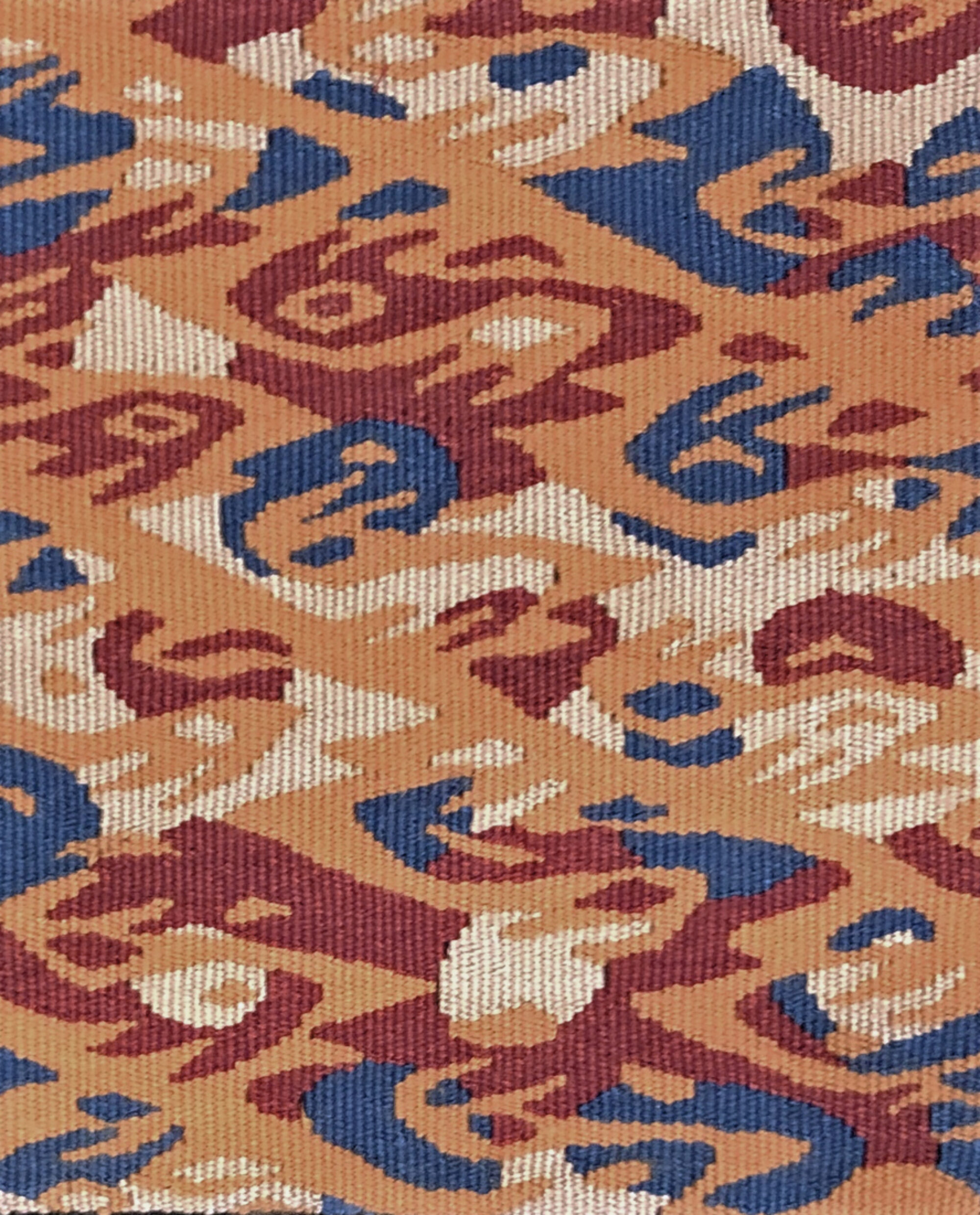This article was first published in Fiberarts Magazine, Summer 2008.
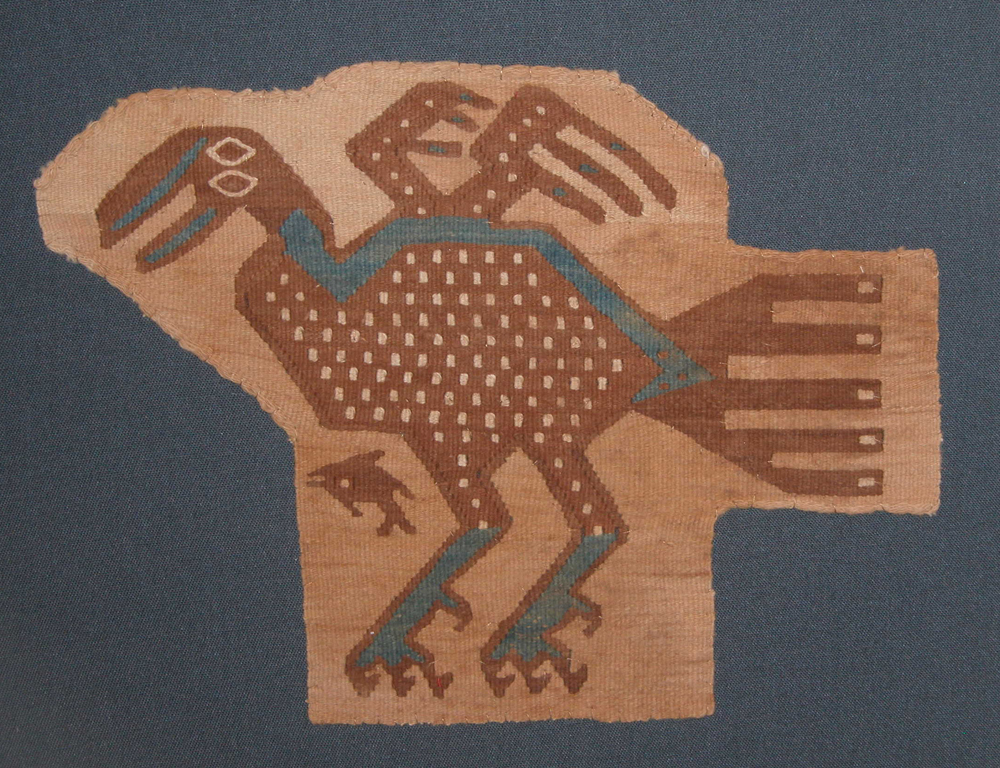
Section from a garment or hanging, 9″ X 9,” Peru, Pachacamac Culture ( 1000 – 1450 AD ), slit tapestry weave, four finished sides shaped as seen with two selvedges and warps ends woven back into the piece; various shades of tan to brown undyed and dyed (blue) cotton, Private Collection, USA, photo: Courtesy of Gail Martin Gallery
Contemporary tapestry weavers are the heirs to an inspiring historical legacy. The value placed on tapestry in cultures such as prehistorical Peru attest to its importance, and the tapestries themselves provide examples for subject matter, woven structure and interpretative techniques. The challenge for contemporary weavers lies in adapting the lessons of the past to serve fresh ideas. Through a workshop sponsored by the American Tapestry Alliance and taught by Susan Martin Maffei, twelve tapestry artists from around the world gathered during the fall of 2007 in New York City to explore that challenge. Field trips to the Gail Martin Gallery, the Textile Conservation Laboratory at the Cathedral of St. John the Divine and the American Museum of Natural History offered participants the opportunity to look closely at Andean textiles, many of which contained images of birds. Maffei’s slide talks covered the history and techniques of Andean tapestry weaving. The students applied this knowledge by weaving two small birds, one in the coastal style of Peru and one in the style of the Peruvian highlands.
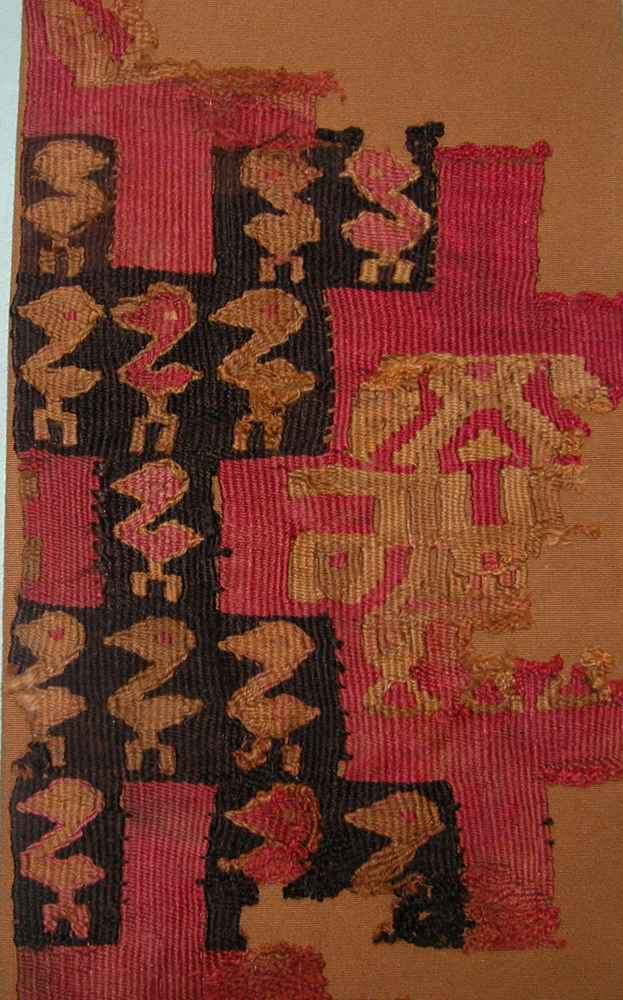
The looms were prepared with a four-selvedge warp, a method that results in a textile with no cut ends. The value placed on uncut cloth in Andean societies reflects cultural notions of continuity. Andean weavers created their images directly on the loom, working within a style that flows naturally from the geometry of the intersecting warp and weft threads. The tapestry from the Gail Martin Gallery demonstrates how the weaver created a bird out of squares, rectangles and triangles, as though he were working with a set of building blocks. Body parts are represented from various viewing angles in order to show as much of the bird as possible. A small fish hints at the bird’s prey.
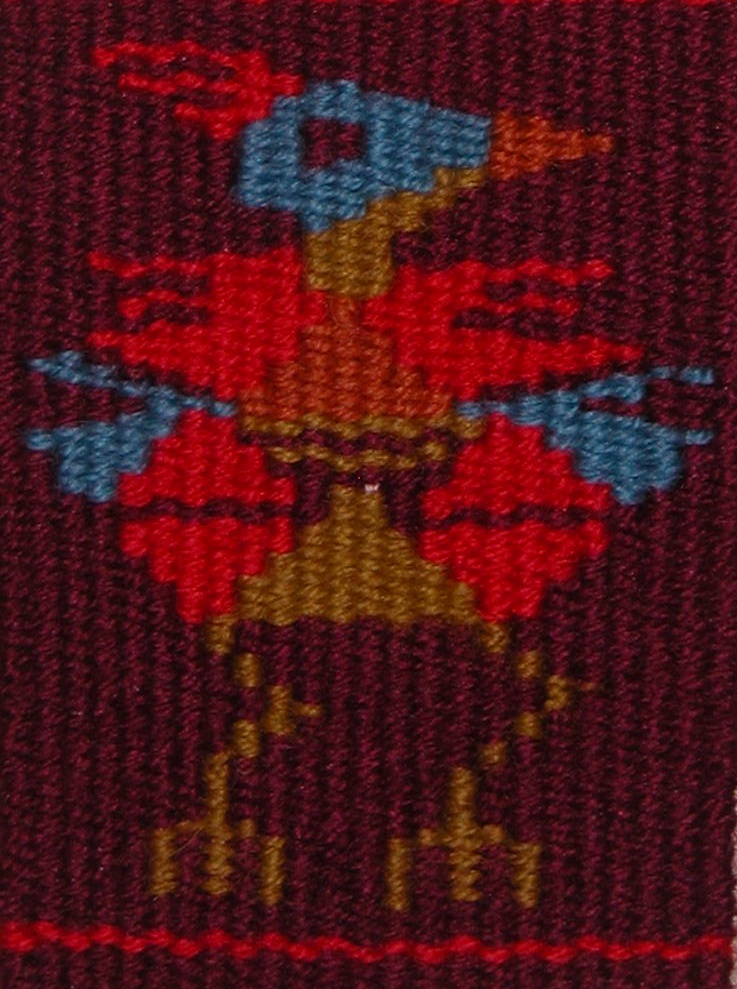
Cresside Collette, Bird Study, 4.5” x 3,” 2007, wool weft on cotton warp, four selvedge, slit, tapestry weave, photo: Mary Lane
Maffei challenged the workshop participants to work in the same manner. No preparatory sketches were made. Instead, the students were encouraged to engage directly with the warp and weft. Cresside Collette’s Bird Study was inspired by the historical examples, but her imaginative approach is contemporary. Like the Andean weavers, she created her image by combining geometric shapes, using the structural and technical qualities of tapestry. Her personality reveals itself in the bright and expressive color palette.
Maffei is a patient teacher and has shared her extensive knowledge in workshops around the world. She is also a consummate weaver. She trained at the Scheuer Tapestry Workshop, at Les Gobelins in Paris and with Jean Pierre Larochette and Yael Lurie. Her work in conservation sparked an interest in historical textiles. Maffei’s unique style utilizes ancient weaving traditions to depict the world around her. Sports Series, a recent project numbering over a dozen tapestries, includes Sport Series: Boxing. This tapestry demonstrates how the principles that Maffei taught during the workshop can be applied to a narrative image. The colorful crowd circling the boxing ring contains hundreds of tiny figures, each a combination of simple geometric shapes. Seen from a distance they merge into a pattern. However, the pattern is not static. The small people come alive as individuals because of the shifting colors and slight modifications in the shapes. The use of color to break apart a pattern was also a common strategy in Andean tapestry. The patterning in the image reflects the underlying structure of cloth, which is itself a repeating pattern of interlacing threads. Maffei combines a bird’s eye view of the boxers with multiple, angled viewing perspectives that allow us to see, simultaneously, all of the corner posts and ropes of the ring. This manipulation of spatial relationships provides the viewer with additional narrative detail.
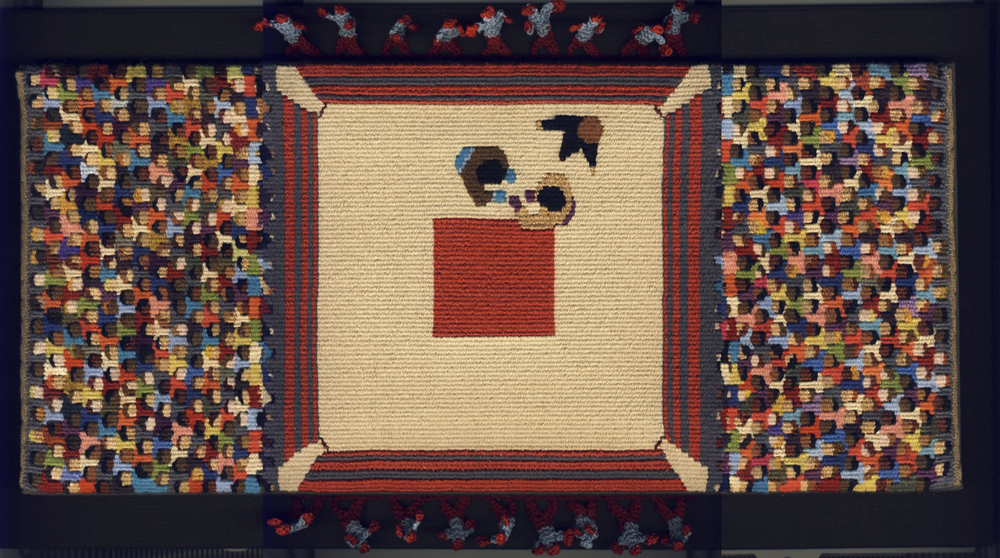
Susan Martin Maffei, Sport Series: Boxing, 8” x 17.5,” photo: Susan Martin Maffei
Contemporary tapestry weavings such as Collette’s Bird Study and Maffei’s Sports Series: Boxing pay homage to a rich historical tapestry tradition by adapting the knowledge of past cultures to create images that reflect the artist’s own particular style and interests.
